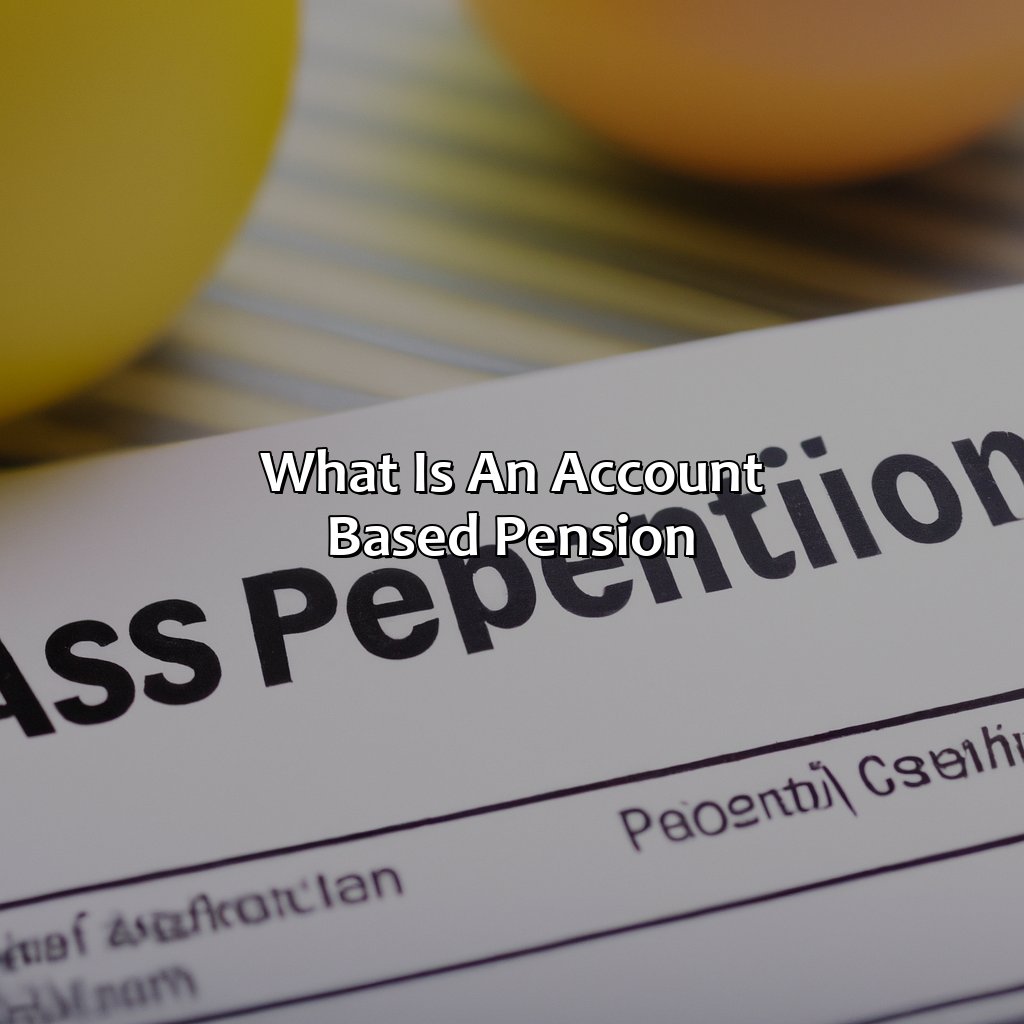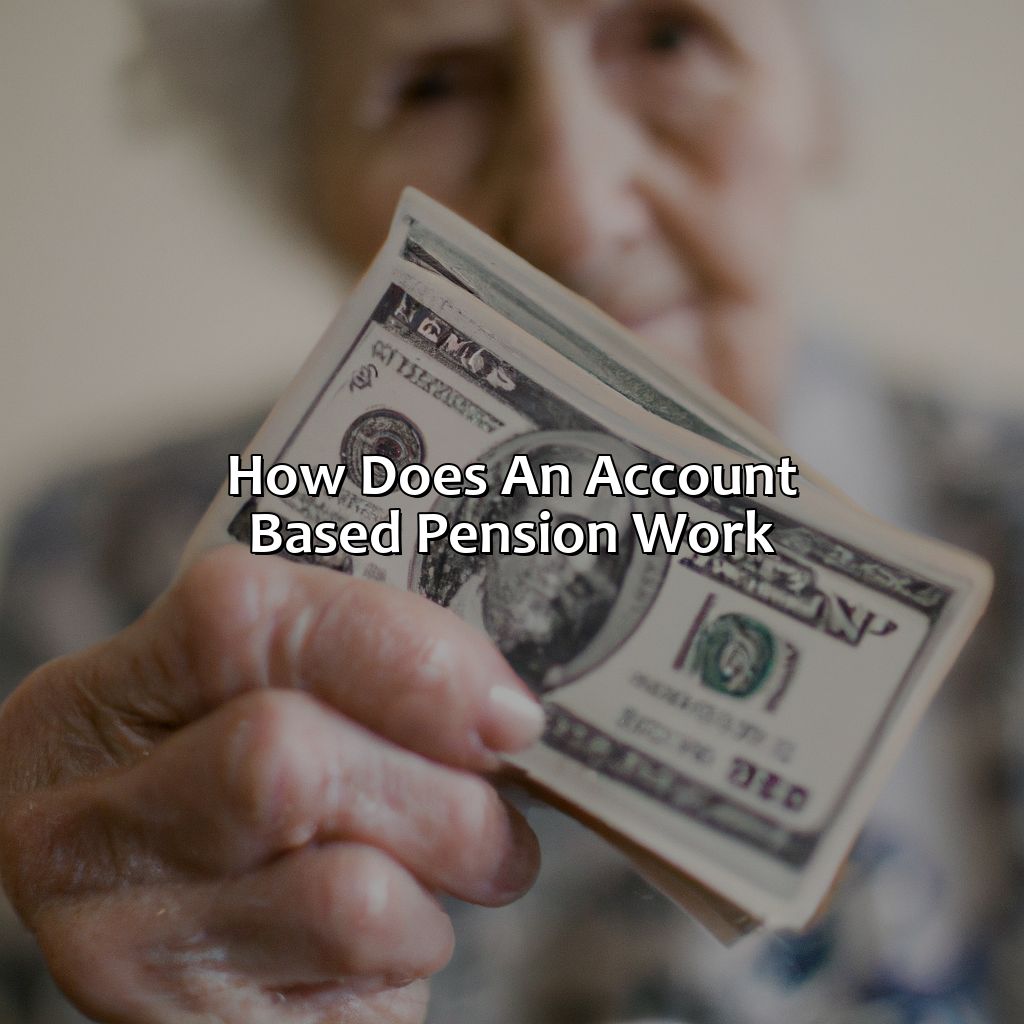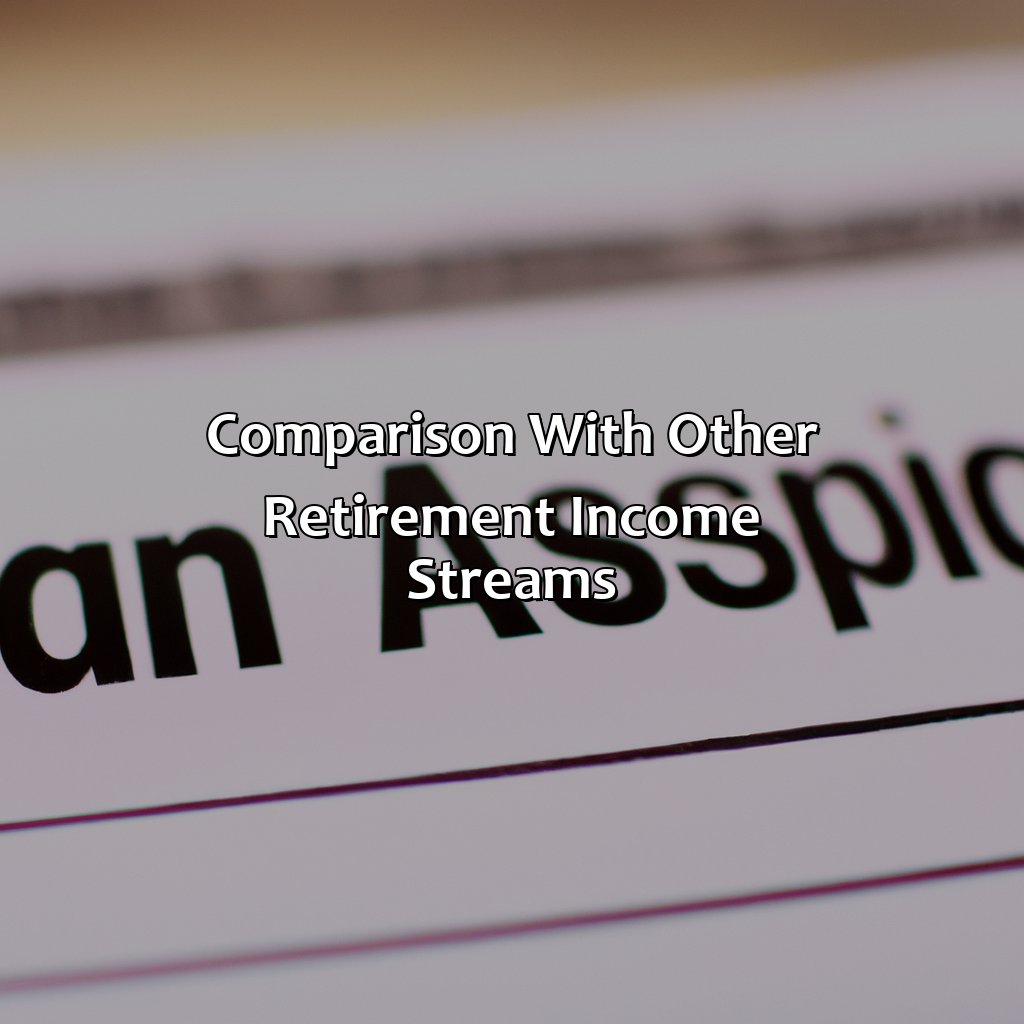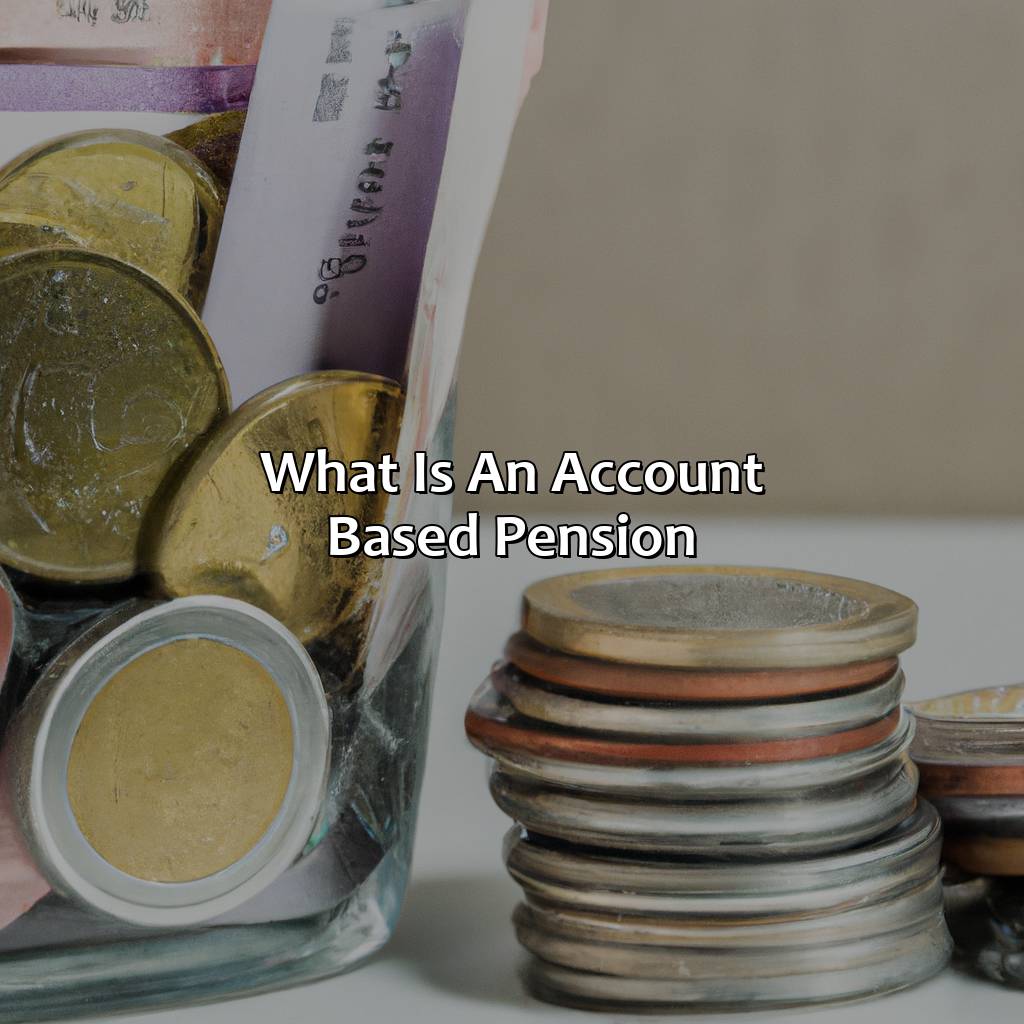What Is An Account Based Pension?
Key Takeaway:
- An account-based pension is a retirement income stream that provides regular payments from an individual’s superannuation account. It is a popular choice for those who are retired or approaching retirement age and want to use their superannuation savings to fund their retirement.
- To be eligible for an account-based pension, an individual must have reached their preservation age (between 55 and 60, depending on their birthdate) and have retired or reached the age of 65. There are also options for those who have reached their preservation age but have not yet retired.
- The benefits of an account-based pension include flexibility in payment amounts and timing, tax advantages, and the ability to leave remaining funds to beneficiaries upon death. It is important to carefully consider the rules and regulations, payment frequency and amount, and tax implications when setting up an account-based pension.
Are you considering retirement planning options? An account based pension could be the answer. You may be wondering what is an account based pension? Discover the benefits of this tax-effective investment solution and how to make it work for you.
What is an Account Based Pension?
What is an Account Based Pension? Is it the right choice? Discover its definition and eligibility requirements. Additionally, learn about its appealing benefits. Let’s delve deeper into Account Based Pension.

Image credits: retiregenz.com by Joel Duncun
Definition and Explanation
An account-based pension is a retirement income stream that allows individuals to withdraw their superannuation savings as regular payments. The amount withdrawn is determined by the balance of the account and investment returns.
This form of pension is commonly used by retirees with a self-managed super fund or who have reached the preservation age but have not yet retired. It provides flexibility in terms of payment frequency, investment choice and beneficiary options.
Account-based pensions can be beneficial for retirees as they offer tax advantages such as tax-free earnings, no tax on lump-sum withdrawals, and reduced minimum payment requirements as they age. However, there are also some risks associated with this type of pension, including changes in investment markets and longevity risk.
You can learn more about how a pension is paid out and the benefits of account-based pensions for retirees.
It’s important to note that once an individual commences an account-based pension, they cannot make additional contributions to their superannuation account. The government regulates minimum withdrawal amounts based on the retiree’s age and balance at the beginning of each financial year. To learn more about how a pension fund works, click here.
According to ASIC’s MoneySmart website, “When you start an account-based pension, your super has been turned into a source of income and you won’t be able to access it as a lump sum until you fully exhaust your balance“.
If personality tests were used to determine eligibility for account based pensions, introverts would win hands down.
Eligibility Criteria
To be eligible for an Account Based Pension, individuals must have reached their preservation age and retired from the workforce or started a transition to retirement plan. They must also have funds in an existing superannuation account to commence the pension. Once established, the pension pays regular income payments based on the account balance and investment earnings.
In addition to meeting eligibility requirements, individuals may also need to consider factors such as tax implications, minimum withdrawal amounts and investment options when choosing to commence an Account Based Pension. If you’re wondering how to find your pension information, visit our website for more information.
It is important to note that while there are no restrictions on how much can be withdrawn from an Account Based Pension each year, individuals should carefully consider their spending needs and long-term financial goals before making large withdrawals that may impact their retirement income.
A close friend of mine recently commenced an Account Based Pension after retiring from a successful career in finance. She found the process straightforward and appreciated the flexibility of being able to choose her own investments within her superannuation account. She now enjoys regular income from her pension while also having peace of mind knowing that her retirement savings are being managed effectively.
Why settle for one income stream when you can have a whole orchestra playing your retirement tune with an Account Based Pension?
Benefits of an Account Based Pension
An Account Based Pension, commonly referred to as a retirement income stream, has several advantages for retirees. This investment vehicle offers flexibility, reduced tax obligations and control over the assets that are held.
- Flexibility: An Account Based Pension ensures that retirees have access to their money when they need it. Withdrawing from this investment is possible without any restrictions on how they spend their money.
- Tax Benefits: This type of pension also helps reduce tax obligations for retirees because it is considered tax-free after the age of 60.
- Asset Control: Account-Based Pensions allow retirees to manage their own assets rather than having them locked into a set repayment system or annuity.
Retirees can choose the amount they wish to withdraw from their account-based pension based on their needs and circumstances, and reinvest unused funds. In addition, investors may be able to receive Centrelink benefits with an account-based pension without any reduction in payments.
It is recommended that investors seek professional advice when considering what type of pension will best suit them. They should consider elements such as required minimum payments, maximum amounts available for withdrawals and balances remaining at the end of life expectancy. By working with financial advisors and making informed decisions about this investment option can provide significant long-term benefits. For more information on pension plans in the US, check out how many pension plans are there in the US.
Get ready to put your retirement savings to work, because an account based pension is like a boss who demands to see some returns.
How Does an Account Based Pension Work?
Knowledge of account-based pension rules, regulations and tax implications is essential. This section will help you comprehend payment frequency and amounts. Get a brief introduction to each sub-section here.

Image credits: retiregenz.com by Yuval Duncun
Rules and Regulations
When it comes to managing your pension plan, it is important to understand the regulations you must follow. This entails adhering to guidelines and complying with the rules set forth by regulatory agencies.
In account-based pension plans, funds are withdrawn from a tax-free superannuation account to provide retirement income for the investor. The investment earnings on the remaining balance should at least meet or exceed the minimum yearly payment under Australian law.
It is worth noting that various factors can influence how much money an individual receives as a result of an account-based pension plan. Factors such as starting balance, opening age, investment returns, fees, charges and inflation all play a role in determining the amount received.
Nowadays, people are living longer than ever before. As such, careful consideration must be given to your retirement strategy and income streams during your golden years. Don’t let fear of missing out (FOMO) push you into making hasty decisions without proper consultation; instead, consult with reliable professionals who can help guide you through this process and make smarter financial decisions for a comfortable life after work.
Get ready for a monthly paycheck from your retirement fund, because with an account based pension, it’s just like getting paid to sip margaritas on the beach.
Payment Frequency and Amount
When it comes to the distribution of funds from an account based pension, there are several factors that come into play. Here’s what you need to know:
- Frequency: The payment frequency of an account based pension can be predetermined and agreed upon with your provider. Typically, payments can be made monthly, quarterly, or annually.
- Amount: The amount of each payment is calculated using a formula that takes into account factors such as your account balance, life expectancy and any applicable fees or charges.
- Minimums and Maximums: There are government-mandated minimum and maximum limits for how much you can withdraw each year. Your provider should ensure you don’t exceed these limits.
It’s important to note that your payments may fluctuate depending on the performance of your investment portfolio. Your provider should be keeping you informed about this regularly so that you can adjust your spending accordingly.
As with any financial decision, seeking professional advice tailored to your specific situation is highly recommended. A financial advisor can help you explore options like reducing your expenses or adjusting your investment strategy to ensure funds last longer throughout retirement. Have you ever wondered who manages pension funds? Learn more about it here.
Tax implications are like a bad ex – you can’t avoid them, but with an account based pension, you can certainly lessen the pain.
Tax Implications
Account based pensions can have significant tax implications for retirees. Withdrawals from the pension account are considered taxable income, but if the pensioner is aged over 60, withdrawals are tax-free. The taxation of an account-based pension will depend on various factors such as the age of the pensioner and how the funds are invested.
When determining tax implications, it’s important to consider other factors such as any lump sum withdrawals taken during the financial year and whether there are any relevant offsets or deductions available. For example, if a retiree has investment properties generating rental income, they may be able to offset the rental income against their taxable pension payments. Learn what percentage of the stock market is owned by pension funds and how that affects your pension payments.
It’s also essential to note that investment earnings within a CAAT pension plan (account-based pension) fund are generally not taxed. However, this may vary depending on individual circumstances and careful consideration should be given before setting up an account-based pension.
According to studies conducted by The Australian Securities And Investments Commission (ASIC), retired couples need approximately $640,000 in savings to live comfortably in retirement.
What is a DB pension?
Retirement income streams compared: it’s like picking between a fancy steak dinner and a hot dog from a gas station.
Comparison with Other Retirement Income Streams
Compare retirement income streams and decide which one is best for you. Learn the contrasts between annuities and account-based pensions. In this section – “What is an Account Based Pension?” – get an understanding of annuities and account-based pensions. Make your decision with all the facts, so you know which income stream is right for you.

Image credits: retiregenz.com by Harry Jones
Annuities and Account-Based Pensions Differences
An account-based pension and annuity are two distinct retirement income streams. An annuity is purchased with a lump sum, while an account-based pension involves investment assets.
| Features | Annuity | Account-Based Pension |
| Taxation | Taxed as income at your marginal tax rate | No tax on earnings within the account, tax on withdrawals at your marginal tax rate. |
| Investment choice | No investment choice; investments are made by the insurer. | You have control over your investments and select from a range of asset classes. |
The lifespan of both accounts varies, where an annuity has a fixed term, while an account-based pension continues until the balance runs out or the owner dies.
In addition to these differences between annuities and account-based pensions, it’s important to note that the latter provides more flexibility.
In fact, according to the Association of Superannuation Funds of Australia (ASFA), almost three-quarters of retirees choose to receive their super benefits as an account-based pension.
A recent study conducted by Mercer confirms this trend. According to their report, approximately ’60 percent of defined contribution plan sponsors now offer only a DC plan option’ for employee retirement benefits’. Retirement income stream? It’s like a choose-your-own-adventure book, except the options all involve living off your life savings.
Choosing the Right Retirement Income Stream
Retirement income streams are essential for seniors, and choosing the right one is crucial. Various options can support daily living expenses. One such option is a strategic investment in an account-based pension. The account-based pension provides a steady source of income as it pays out from your accumulated superannuation balance.
This retirement option allows retirees to control their spending while keeping their assets invested for potential growth. Combining an account-based pension with other sources of income like the Age Pension results in better financial outcomes in retirement. What’s more, this pension option offers flexible payment options that enable you to adjust your payments based on your needs.
Unlike other income streams that offer fixed payments or have limited access to the remaining fund after the retiree dies, account-based pensions offer flexibility regarding how much and when money should be drawn down. Furthermore, if you’re uncertain about market performance after retirement and want to keep your funds secure, annuities may be a better option than account-based investments.
I’ve heard of a retiree who opted for an account-based pension after retiring early and received regular PAYG credits while keeping his investments intact. This allowed him to enjoy his golden years without worrying about finances and even provide financial assistance where necessary without dipping heavily into savings.
If you’re wondering about retirement plans, you may also be curious about what is the UK state pension and how it works.
Some Facts About Account Based Pension:
An account based pension is a retirement income stream generated from an individual’s superannuation account. (Source: Australian Taxation Office)
The pension payments are calculated based on the account balance and the individual’s age at the time of the pension commencement. (Source: Moneysmart)
The pension payments are tax-free for individuals aged 60 or over. (Source: Australian Securities and Investments Commission)
The minimum pension payment amount is set by the government and varies depending on the individual’s age and account balance. (Source: Australian Taxation Office)
An account based pension can be structured to provide a residual benefit to a beneficiary upon the death of the pension recipient. (Source: AustralianSuper)
FAQs about What Is An Account Based Pension?
What is an account-based pension?
An account-based pension, also known as an allocated pension, is a type of retirement income stream that lets you access your superannuation savings as regular payments. The payments come from an account-based pension account that you set up using your superannuation savings.
How does an account-based pension work?
An account-based pension works by you converting your superannuation savings into a regular income stream. The income stream that you receive is paid from your account-based pension account, which is invested in a range of assets such as shares, property, fixed interest and cash.
Who can get an account-based pension?
To be eligible for an account-based pension, you need to have reached preservation age (between 55 and 60, depending on your date of birth) and have retired or reached your pension age. Alternatively, you may be able to start an account-based pension if you re still working but have reached your preservation age and have permanently reduced your working hours.
What are the benefits of an account-based pension?
The benefits of an account-based pension include giving you flexibility and control over how you receive your retirement income, the potential for higher investment returns compared to traditional annuities, and the ability to leave any remaining funds to your beneficiaries upon your death.
How much can I withdraw from my account-based pension each year?
The amount you can withdraw from your account-based pension each year is determined by the government s minimum and maximum annual payment rules. The minimum requirement is that you must withdraw a certain percentage of your account balance each year, which increases as you age. The maximum is set at 10% of the account balance each year.
What happens to my account-based pension when I die?
When you die, any remaining funds in your account-based pension account will be paid to your nominated beneficiaries or your estate according to your wishes. The payment can be made as a lump sum or as a new account-based pension for your beneficiaries. The payment options will depend on the terms and conditions of your account-based pension.
 Checkout this IRS Loophole
Checkout this IRS Loophole 
